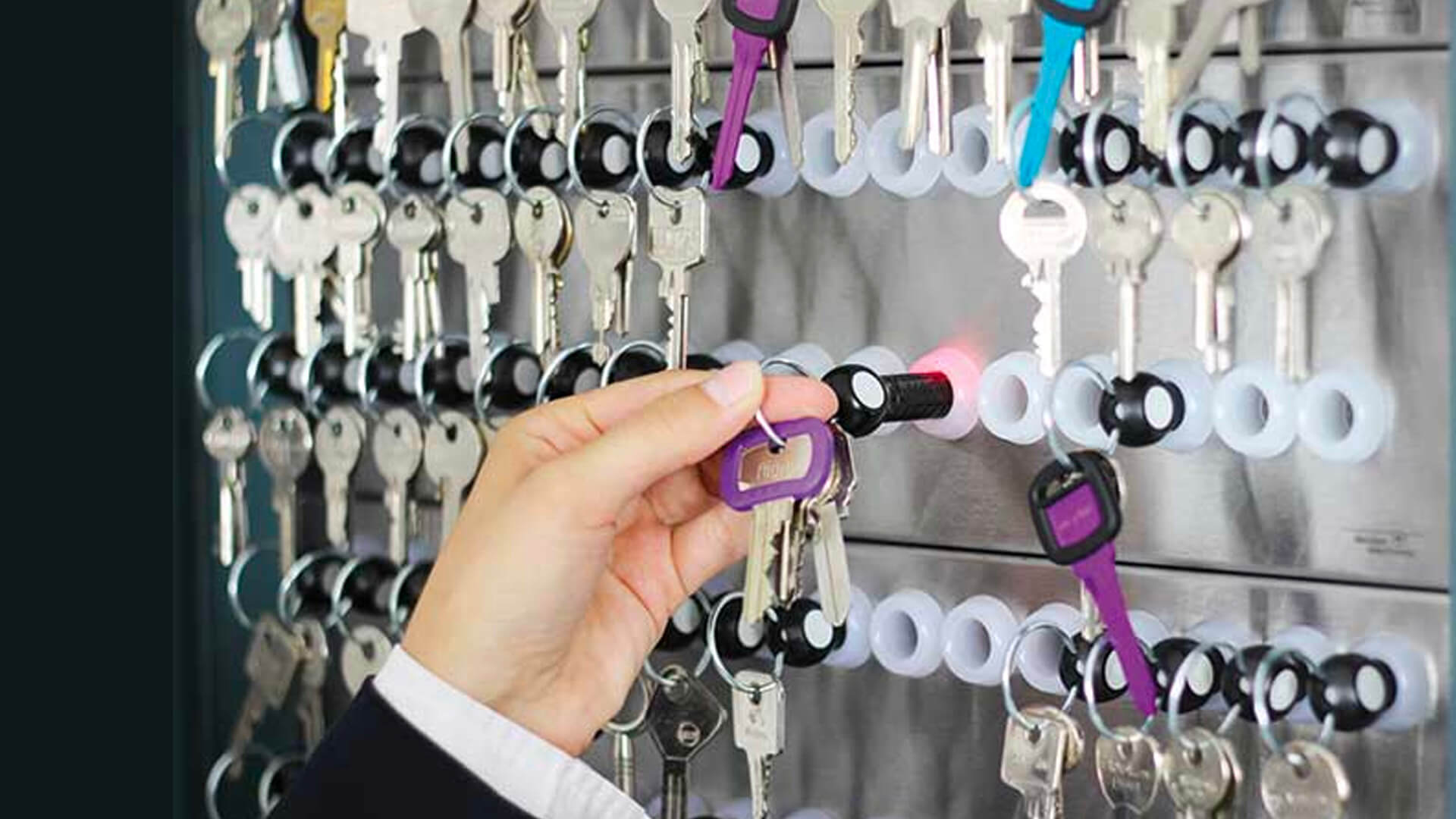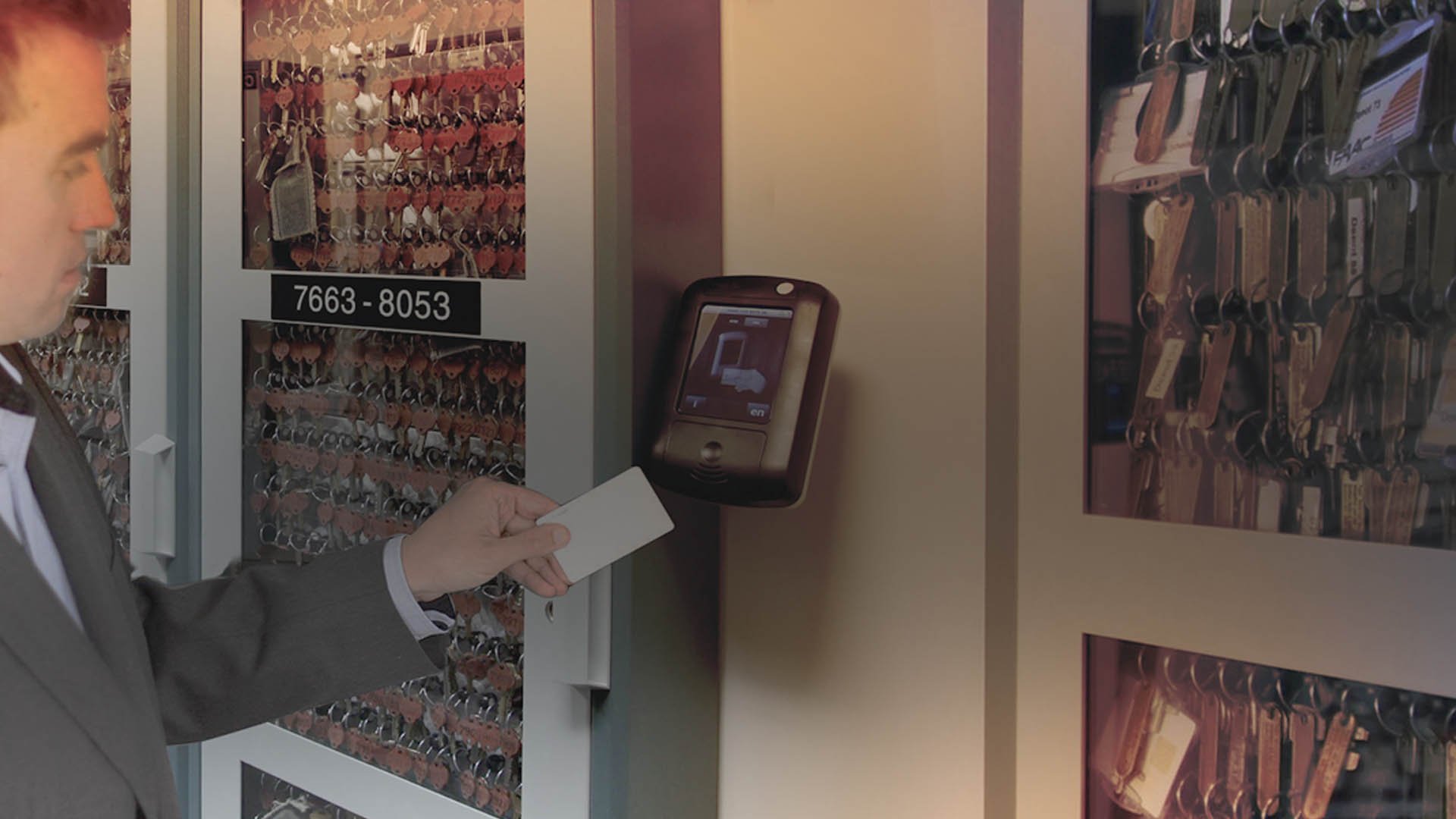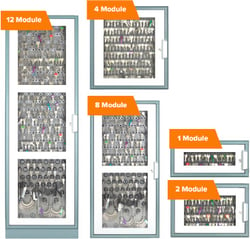By Jay Palter | August 24, 2022
Many organizations have realized that even though we’re living in an increasingly digital world, physical keys are here to stay. Despite competition from mag and chip cards, mobile credentials, and biometrics, physical keys remain the most cost-effective access control method for many public and private venues.
But if physical keys are here to stay in our digital world, that poses some management challenges. For example, how do we track keys when the rest of our organizations are online? Key management systems offer an answer.
This purchasing guide for key tracking systems covers everything you need to consider before making one of these major purchases. Next, we’ll review the hidden costs of key management you need to be aware of and highlight the essential features of key tracker systems that you’ll want to compare. Finally, we end with a purchasing checklist you can use to prepare for your key tracker purchase.
Table of Contents
The Hidden Costs of Manual Key Management
Many organizations think key management systems are an unnecessary cost they don’t need to carry. That is, at least until a major loss or theft requires them to undertake a major rekeying. However, key management systems actually save organizations time and money in the long run. If you don’t think so, consider these hidden costs associated with key management.
People & Administration
For many organizations, adding up the work hours their personnel spend each year managing keys is enough to get them to consider an automated solution. For starters, consider the time spent just on key transactions.
How long does someone in your facility take to sign out a key? Do they have to walk across the entire facility? Does a security officer have to retrieve it for them? What if the key isn’t there and the officer has to look for it? Multiply those events over an entire year, and you’re looking at dozens, maybe even hundreds of hours.
Then there is the administration of your key control program. For example, how much time do your security or facilities personnel spend tracking key use manually? Managing losses and procurement? Filing business reports by hand? How much could you save in salaries if you automated all those white-collar activities? What other, more productive work could you turn that personnel towards?
Human Error
Those activities above are things you actually want your personnel to do, and they still come with a high cost. But if anything, human errors are even more costly when it comes to keys and security.
Keys misplaced, lost, and stolen due to human error can be costly. For example, someone could walk out the door with a critical key in their pocket and not realize the mistake until they’re home. It seems minor, right? The employee just returns the key the following day. But meanwhile, any other work requiring that key grinds to a halt. And processes might be triggered to track down the missing key, which costs money and likely redirects other employees from more productive work.
If a key is completely lost, things get even more expensive, especially if it is a master key. Take the case of San Francisco State University. In 2019 an unmarked ring of master keys went missing. Remediation reportedly was “expected to cost at least a million dollars in materials, labor, and safety measures.”
Knowledge Management
Building, running, and analyzing reports take time and, more importantly, often take deep institutional knowledge, which in its own right is an expensive asset to build. What regulatory standards must your organization meet? Which KPIs are the most important? It can take a while before a new hire can effectively answer those questions and manage the associated report building. And in the meantime, if you fail to meet any compliance standards, you might face steep fines.
Learn more about Key Tracking Solutions from Real Time Networks.
Learn MoreFeatures to Looking for When Comparing Key Tracking Systems
Comparing different key tracking systems on the market can feel like a bewildering experience. Some boast a laundry list of features so long it is hard to tell what actually matters. Let us simplify things. When researching different key systems, you need to compare these essential features.
Key tracking method
Key tracking systems can use many different methods to verify key identity. The most common are radio frequency identification (RFID) and metal contact.
Metal contact key tags authenticate key rings when inserted into a lock slot in key cabinets. They require clean, direct contact. Over time, dirt and grease build up on these contact key tags and inside their metal lock slots. Be aware this can degrade performance and requires extra maintenance. On the other hand, these systems have been around for decades and use commodity technology, so on the upside, they also tend to be less expensive than their modern counterparts.
RFID key tags are non-contact—they only need close proximity to verify their identity. Unlike metal key tags, they are also manufactured in a cylindrical form factor, so they’re easier to insert and remove from lock slots. In addition, dirt and grease do not interfere with their signal transmission. RFID tags come at a slightly higher price point, but many providers offer a lifetime warranty on RFID key tags because they are durable. RFID key lock boxes typically also offer faster transaction times than older metal contact systems.
Service and support
Key tracking systems are living technology. You shouldn’t expect to flip a switch on day one and never manage them ever again. The provider you choose will need to act as a business partner for the full lifecycle of the system. What level of day-to-day support does each provider offer? Just email? Live phone support? And when? Only business hours or around the clock?
Also, consider what development support they can offer before and after you deploy your key system. Ask if they can customize their software. Can they help you build custom reports for your industry and regulatory needs?
Access control options
If you’re already using an electronic access control system for security elsewhere, look for a key tracking system that can integrate with that standard. On the other hand, if you opt for a brand new authentication method, consider whether PIN codes, swipe cards, mobile phone apps, and biometrics, such as fingerprints or iris identification, strike the right balance between usability and security in your facility. Just be aware that more secure access control methods, such as biometrics, tend to come at a higher price point.
Configuration options
Ask representatives you speak with about how you can configure key cabinets for their product, if at all. Some key systems are one-size-fits-all cabinets. Others you can customize for different quantities of keys or key rings. For example, you may want a high density of individual key slots. Or you might want enough space to hold just a few extra-large key rings.
Process control & automation features
Smart key systems with customizable access controls can help you monitor staff performance. Find out whether you can customize the access controls on different smart key locker products you consider. For example, can you give users checklists at key sign-out and return? Some key systems do this, allowing you to collect valuable information about the workflows within which keys are used. That feature is especially useful for fleet management, where you may want to track vehicle maintenance issues and fault codes reported by drivers.
10-Step Purchasing Checklist to Get the Best Fit Key Management System
Buying a new key tracker system doesn’t need to be a headache for your team. Follow this flexible 10-step purchasing guide to make sure you’re dotting the right I’s and crossing the right T’s, and you’re sure to get the most value for your money in any new system you purchase. Just a little bit of planning like this will pay for itself for years to come.
-
Define your challenges
Start by brainstorming all the key management and key security challenges you face. Also, try to brainstorm challenges in the workflows within which those keys are used that better management can help.
-
Document regulatory requirements
One specific set of challenges you need to think about is any regulatory requirements your company faces. For example, you might need to keep audit trails on all keys, key transactions, system alarms, or user transactions.
-
Set strategic goals
With all your challenges and other business requirements outlined, now think about your strategic goals for improving high security electronic key management. This step isn’t about technology. Instead, it is about the underlying business practices you want to improve and how changing them supports your organization’s greater goals. For example, do you want more detailed reporting and auditing? Fewer key losses? Reduce staffing for manual key transactions?
-
Plan your tentative installation
Now that your higher-level business needs are documented, you should start planning how, when, and where your personnel will use a new key system. Determine what size and type of key drop box best fit your needs. Next, identify locations as close to the point of need as possible where you could install those cabinets.
Then audit your existing infrastructure that might be affected by installing a new key tracking system, namely network and electrical infrastructure. Then, document processes and policies that will be affected, such as new hire intake processes and access control policies for sensitive locations.
-
Consider future growth
What appears sufficient space today might be cramped two years down the road. So plan for expansion now, and you will avoid having to replace an entire, inadequate key tracking system later.
-
Research options on the market
Now it is time to see what options are on the market. Whether you plan to visit trade shows, contact known providers directly, or research online, the planning you’ve done up to this point should help you better evaluate each potential candidate.
-
Create a shortlist
Narrow your options down to the ones that appear most likely to fit your criteria and contact the providers to get quotes.
-
Project your Total Cost of Ownership (TCO)
Some key tracking system providers will offer price comparison sheets. Take those with a grain of salt, as they usually only present upfront costs. What you want to compare is the total cost of ownership, which includes all expenses incurred over the expected lifetime of the system. Include in your TCO comparisons support costs, system updates, customization, reporting, and ongoing maintenance of your system.
Also ask about warranty options. Some vendors provide a standard one-year warranty, while others have expanded options. Is the warranty all-inclusive? If not, what’s excluded, and what are the cost implications if something goes wrong?
-
Demo your final candidates
Take every system that meets your TCO requirements and get a thorough demonstration of its capabilities from the provider. That should give you the final information you need to purchase.
-
Execute
All that is left is to execute. Make your purchase and begin your key tracking system installation. Then, you’re on your way to better, more cost-effective key management.
Are you ready to plan your key tracking system purchase?
Then check out our even more detailed guide, the Real Time Networks Top 10 Purchasing Checklist for Key Management Systems.

Jay Palter
Vice President of Marketing




